I recently saw that someone went into Wikipedia and removed some of the more interesting facts and anecdotes I added in the summer of 2007 to give the existing webpage some needed history and heft, because it was previously embarrassingly shallow for a school that's produced so many proud graduates over the years, not least of all me, from the Class of 1979.
I've used my entry from last year as a foundation and added some things to give anyone ever wanting to understand what NMB Senior High was all about thirty years ago, some much needed perspective on things, since the area has undergone so many changes since then, many of which are for the good, I suppose, but many for the worse.
Frankly, I should've just posted my entry here in the first place, since the Wiki page was deadly dull, and I could've saved myself a lot of time conforming to their so-called "style."
__________________________
North Miami Beach High School
North Miami Beach Senior High School is located 1247 NE 167 Street, North Miami m in North Miami Beach, Florida; Its current principal is Raymond L. Fontana. North Miami Beach was built in 1971 as an overcrowding reliever school for North Miami High School to the south at 800 N.E. 137 Street, and Miami Norland High School to the northwest at 1050 N.W. 195 Street. North Miami Beach Senior High School was also a pioneer in school construction, being the first high school in Dade County ever to be built with no windows of any kind, and was, necessarily, completely air-conditioned.
North Miami Beach Senior High School is located 1247 NE 167 Street, North Miami m in North Miami Beach, Florida; Its current principal is Raymond L. Fontana. North Miami Beach was built in 1971 as an overcrowding reliever school for North Miami High School to the south at 800 N.E. 137 Street, and Miami Norland High School to the northwest at 1050 N.W. 195 Street. North Miami Beach Senior High School was also a pioneer in school construction, being the first high school in Dade County ever to be built with no windows of any kind, and was, necessarily, completely air-conditioned.
NMBHS's creation and its initial non-traditional style of education, with no traditional letter grades, not only created new natural rivalries with existing high schools, but also created tension within many middle and upper-middle class North Dade families, whose older children had attended and graduated from traditional Dade County schools, and who weren't necessarily happy that their younger children would be placed in an experimental school that eschewed the traditions the parents knew, as the Miami Herald reported often at the time.
This proved inevitable when younger siblings went to a high school other than the one their older brothers and sisters -and in some cases, parents- had grown-up attending and supporting with their time, attention and money. Family traditions and habits are indeed hard to break.
This created a hard cleavage in school spirit, whose practical effects were often felt at NMB home games, since, early on, only a very small percentage of actual NMB residents had any tangible connection to the new high school with big hopes and even larger expectations.
By the time the school was four years old, the non-traditional approach had been abandoned.
There was a high percentage of NMB residents who were either recent Northeast transplants with roots elsewhere.
Many Seniors had no grandchildren attending NMBHS. The initial rush and enthusiasm of school spirit often proved fleeting, with no established Charger tradition or generations of devoted alumni of their own to fall back on.
For many observers close to the NMB scene, this apathy among NMB residents, who, in other locales would've been natural school supporters, was largely proven when a medium-sized winter carnival with rides and attractions was held in February of 1976, just as the 1976 Winter Olympics were being nationally televised each night to huge ratings, thanks to the natural appeal of American figure skater Dorothy Hamill.
It's important to remember that with very few families owning pricey Betamax VCRs back then, and with DVRs and TiVos to record their favorite TV programs a distant unimaginable dream, people in North Dade had to vote with their feet: stay home and watch the Olympics, or attend the NMB sports carnival and miss being able to watch the exciting live sports broadcasts?
In the end, it was no contest, as Gold Medal-winner Dorothy Hamill proved irresistible to American TV viewers, with her enormous talent and poise, beaming smile and unique bobbed hairdo style that immediately fueled an epidemic across the country.
Held on the NMB soccer/practice football field on the NW part of campus that Charger soccer players affectionately called "Poly-Rock Stadium" -a dig at the expense of the then-existing Poly-Turf football field at the Orange Bowl, where the University of Miami and the Miami Dolphins football teams played- the winter sports carnival was the sort of fundraiser that's held annually in large parts of the country, especially in the Midwest and South.
Planned for the sole purpose of raising much-needed funds for the beleaguered NMB athletic department's bottom line, to help offset the myriad costs associated with fielding the same number of competitive sports teams as other better-established Dade high schools, but with none of the built-in traditional fan and financial base.
The event proved not to be a roaring success, attendance-wise, and after nearby residents and homeowners who had previously signed needed petitions to gain the permit, suddenly expressed dismay at the event to local media, the event was never repeated.
NMBHS's particular geographical location in South Florida has played a large role in shaping its history, as well as the day-to-day mood of its very diverse student body.
The reason is that for the better part of its first fifteen years of existence, prior to the opening of the much-larger and upscale destination-style Aventura Mall on Biscayne Boulevard and N.E. 203 Street, the school was just across the street from the very popular regional shopping center, The Mall at 163rd Street, which featured dozens of retail stores. (For most of those first 15 years as neighbors, the shopping center was an outdoor shopping center, exposing shoppers to South Florida's sub-tropical heat or drenching thundrestorms.)
Among the more popular stores were a very successful Burdine's, a Jordan Marsh, a J.C. Penney's, a Rich's, an Oshman's Sporting Goods and lots of small-to-medium sized "Mom-and-Pop" stores, as well as chain clothing, bookstores and sundry stores.
It was also well-known for being the home of three WOMETCO movie theatres, which were the largest movie theatres in northern Dade County from roughly 1968-83, drawing large numbers of film fans from southern Broward County as well. (WOMETCO was the then-corporate owner of the popular Miami Seaquarium on Key Biscayne and WTVJ-Channel 4, the long-dominant news station in South Florida under legendary broadcaster and news anchor Ralph Renick.)
Because of this synergy, the theatres were a very popular date spot, since the only other movie alternatives consisted largely of the Miami Shores theatre in Miami Shores many miles to the south, or the two drive-in theatres off State Road 836, west of the Golden Glades Interchange, on N.W. 27th Avenue and N.W. 37 Avenue.
The mall's northern side, closest to the school itself, also served as a very busy Metro bus terminal, the largest in northern Dade County, and thus was an important lifeline for NMBHS students and employees heading to or from home, or to after-school jobs elsewhere in the area.
"163rd Street" was a very important employment center for NMB students in the summer and over Christmas and Hanukah holidays, and, to the consternation of assistant principals at both NMBHS and JFK Junior High, to the west of NMBHS, also proved a popular hang-out for students predisposed to skipping school entirely.
It was equally popular with NMB students looking for a break at lunch-time, and after myriad evening school sports, drama and music activities.
Unfortunately, the natural traffic associated with the financial success of the shopping mall had a down side as well, as it tended to reinforce in NMB resident's minds the longstanding parking problems with the area, which discouraged families from attending evening events at NMBHS.
Until a regional high school football stadium was built in the 1990s at the (northern) Biscayne Bay campus of Florida International University off Biscayne Boulevard and N.E. 151 Street, the NMB Chargers football team played both its home AND away games at the northern regional football stadium, Traz Powell Stadium. Located at the-then Miami-Dade North Community College campus, now called Miami Dade College, it was located more than 7 miles away from the NMB campus.
Once students, faculty and fans arrived in the immense parking lot, local police providing security for the event directed you to the side of the stadium NMB was assigned to: "Home or Visitors'.
This bad situation, on top of the already existing fan-base problem in NMB, only made school spirit at football games problematic for all but the most devout Charger fans, since, on average, at least 75% of the fans at the games couldn't legally drive, and were completely dependent on adults to drive them to the stadium.
This logistical nightmare made it all but impossible for residents of NMB and environs to actually see the high school's team in action, and had the practical effect of meaning that in a very real sense, none of the post-game activities that high school kids have been traditionally conditioned to expect for themselves through novels, television shows and films were open to them. That was for kids at other high schools.
North Miami Beach also has a Biomedical and Environmental Advancement Magnet program (BEAM) available to any students in the district. The program gives higher education credits to students wishing to pursue a career in medicine or environmental sciences.
In the summer on 2005, the school added a new two story building to its campus.
NMB's current athletic rivals are North Miami Senior High School and Dr. Michael M. Krop High School.
Prior to the opening of Krop, the following schools were the most intense rivalries in NMB's most consistently successful sports teams: Men's Soccer- North Miami Senior High School, especially games at the Pioneers' home field, the scene of a historic Ciro Martinez-led last-second Charger win in 1976 that helped fuel the Chargers' run to the Florida state championship.
The Vikings of Miami Norland Senior High School, who inflicted a bitter 1977 loss on the Chargers, knocking them out of the Florida state playoffs at Lockhart Stadium in Fort Lauderdale, and ending the Chargers' hope of winning back-to-back Florida state soccer championships. The Vikings eventually finished as the state runner-up that year.
Women's Gymnastics-
North Miami Senior High School always proved tough competition when talented twin sisters Debbie Reiser and Donna Reiser were top-flight All-Dade gymnasts there between 1975-79, but ultimately, NMB's greater depth and all-around ability always won the day by the last event led by Lisa Martin and Karen Ginsburg.
By far, the toughest competition for the NMB Charger gymnastics team during their undefeated glory days of the late 1970s under head coach Peter Saponaro -himself an All-American and co-captain of an NCAA Championship Men's team at Penn State in the 1960s- came against the orange and blue-clad Trojans of HML, Hialeah-Miami Lakes High School, when H-ML dominated the high school sports world of Miami in nearly every sport, as few schools have before or since.
NMBHS's particular geographical location in South Florida has played a large role in shaping its history, as well as the day-to-day mood of its very diverse student body.
The reason is that for the better part of its first fifteen years of existence, prior to the opening of the much-larger and upscale destination-style Aventura Mall on Biscayne Boulevard and N.E. 203 Street, the school was just across the street from the very popular regional shopping center, The Mall at 163rd Street, which featured dozens of retail stores. (For most of those first 15 years as neighbors, the shopping center was an outdoor shopping center, exposing shoppers to South Florida's sub-tropical heat or drenching thundrestorms.)
Among the more popular stores were a very successful Burdine's, a Jordan Marsh, a J.C. Penney's, a Rich's, an Oshman's Sporting Goods and lots of small-to-medium sized "Mom-and-Pop" stores, as well as chain clothing, bookstores and sundry stores.
It was also well-known for being the home of three WOMETCO movie theatres, which were the largest movie theatres in northern Dade County from roughly 1968-83, drawing large numbers of film fans from southern Broward County as well. (WOMETCO was the then-corporate owner of the popular Miami Seaquarium on Key Biscayne and WTVJ-Channel 4, the long-dominant news station in South Florida under legendary broadcaster and news anchor Ralph Renick.)
Because of this synergy, the theatres were a very popular date spot, since the only other movie alternatives consisted largely of the Miami Shores theatre in Miami Shores many miles to the south, or the two drive-in theatres off State Road 836, west of the Golden Glades Interchange, on N.W. 27th Avenue and N.W. 37 Avenue.
The mall's northern side, closest to the school itself, also served as a very busy Metro bus terminal, the largest in northern Dade County, and thus was an important lifeline for NMBHS students and employees heading to or from home, or to after-school jobs elsewhere in the area.
"163rd Street" was a very important employment center for NMB students in the summer and over Christmas and Hanukah holidays, and, to the consternation of assistant principals at both NMBHS and JFK Junior High, to the west of NMBHS, also proved a popular hang-out for students predisposed to skipping school entirely.
It was equally popular with NMB students looking for a break at lunch-time, and after myriad evening school sports, drama and music activities.
Unfortunately, the natural traffic associated with the financial success of the shopping mall had a down side as well, as it tended to reinforce in NMB resident's minds the longstanding parking problems with the area, which discouraged families from attending evening events at NMBHS.
Until a regional high school football stadium was built in the 1990s at the (northern) Biscayne Bay campus of Florida International University off Biscayne Boulevard and N.E. 151 Street, the NMB Chargers football team played both its home AND away games at the northern regional football stadium, Traz Powell Stadium. Located at the-then Miami-Dade North Community College campus, now called Miami Dade College, it was located more than 7 miles away from the NMB campus.
Once students, faculty and fans arrived in the immense parking lot, local police providing security for the event directed you to the side of the stadium NMB was assigned to: "Home or Visitors'.
This bad situation, on top of the already existing fan-base problem in NMB, only made school spirit at football games problematic for all but the most devout Charger fans, since, on average, at least 75% of the fans at the games couldn't legally drive, and were completely dependent on adults to drive them to the stadium.
This logistical nightmare made it all but impossible for residents of NMB and environs to actually see the high school's team in action, and had the practical effect of meaning that in a very real sense, none of the post-game activities that high school kids have been traditionally conditioned to expect for themselves through novels, television shows and films were open to them. That was for kids at other high schools.
North Miami Beach also has a Biomedical and Environmental Advancement Magnet program (BEAM) available to any students in the district. The program gives higher education credits to students wishing to pursue a career in medicine or environmental sciences.
In the summer on 2005, the school added a new two story building to its campus.
NMB's current athletic rivals are North Miami Senior High School and Dr. Michael M. Krop High School.
Prior to the opening of Krop, the following schools were the most intense rivalries in NMB's most consistently successful sports teams: Men's Soccer- North Miami Senior High School, especially games at the Pioneers' home field, the scene of a historic Ciro Martinez-led last-second Charger win in 1976 that helped fuel the Chargers' run to the Florida state championship.
The Vikings of Miami Norland Senior High School, who inflicted a bitter 1977 loss on the Chargers, knocking them out of the Florida state playoffs at Lockhart Stadium in Fort Lauderdale, and ending the Chargers' hope of winning back-to-back Florida state soccer championships. The Vikings eventually finished as the state runner-up that year.
Women's Gymnastics-
North Miami Senior High School always proved tough competition when talented twin sisters Debbie Reiser and Donna Reiser were top-flight All-Dade gymnasts there between 1975-79, but ultimately, NMB's greater depth and all-around ability always won the day by the last event led by Lisa Martin and Karen Ginsburg.
By far, the toughest competition for the NMB Charger gymnastics team during their undefeated glory days of the late 1970s under head coach Peter Saponaro -himself an All-American and co-captain of an NCAA Championship Men's team at Penn State in the 1960s- came against the orange and blue-clad Trojans of HML, Hialeah-Miami Lakes High School, when H-ML dominated the high school sports world of Miami in nearly every sport, as few schools have before or since.
For years the Trojan gymnasts were consistently the second-best team in the state of Florida under the tutelage of their veteran head coach Don Gutzler.
The Trojans were led by some enormously talented gymnasts, including my friend, the late Dee Leutner, who I ran into outside of NMB the day we were to take the SATs, and who sat at my table after we psyched each other up. What a sweetheart she was!
After leaving HML, Dee was a proud University of Georgia Gym Dog teammate of one of my great friends on the NMB team, Linda Zobler, the middle daughter of the amazing gymnastic Zobler sisters, Katie and Susan, whose proud and encouraging parents never missed a home meet and were a model for what gymnastic parents ought to be.
(Katie was the first of my NMB gymnastic friends to head up to Athens and join the University of Georgia GymDogs around 1977 or '78.
because of her fantastic personality and ever-present smile, Linda Zobler was an immensely popular person at NMBHS, especially with the Boys Soccer team back when the NMB Boys soccer team and Girls gymnastic teams were very interconnected because of their mutual support for each other at games and meets, but also because, quite frankly, they were by far the most consistently talented and successful teams in the school.
It was only natural that they gravitated towards each other.
The tall and graceful Deeanne Fernandez was another great HML gymnast, especially on balance beam and bars.
A red-haired ball of energy named Tracey Blake, also my friend, was yet another star HML gymnast, and later followed me up to Indiana University, where she became the captain of the Hoosier gymnastics team.
Dee, Linda, Deeanne and Tracey all consistently made the Miami Herald and Miami News All-Dade County gymnastics team year after year, without fail, just as prior friends and stars like Lisa Martin and Karen Ginsberg ui .
H-ML always provided the Chargers with the sort of tough but friendly competition that was usually never settled until the very last competitor had performed, as happened often in the GMAC (county) championship meet, and the 1979 state championship at NMB, the Chargers always emerging bloodied but victorious.
The NMB vs. H-ML gymnastics meets were always well-attended, regardless of the venue, but never more so when they were held at NMBHS, when appreciative evening crowds of 1,500-2,000 people were not at all uncommon, and only added to the spirit and tension of a meet between what were clearly the two best teams in the state of Florida, and among the best in the nation, year after year.
Though they were tough competitors during the course of the meet, the Chargers and Trojan gymnasts were kindred spirits and friends away from the gym, and the large number of fans who attended these intense meets were always very keen on showing their appreciation of the
H-ML gymnasts for their talent and style, since their ability only served to push the Chargers even harder.
H-ML gymnasts for their talent and style, since their ability only served to push the Chargers even harder.
Years later, South Florida sports fans who were fortunate enough to have attended those meets STILL remember the tension that greeted every performance and judge's score, as the Charger and Trojan gymnasts put on an impressive show of talent and style that were unique for the world of high school sports in general, and high school gymnastics in particular.
They were the best of competitors for two hours and the best of friends afterwards.
Bobby Kemp - former NFL strong safety for Cincinnati Bengals from 1981-86, and Tampa Bay Buccaneers in 1987. Started in Super Bowl as rookie.
Steve Nicosia -MLB Catcher, 8 seasons, 1978-1985 Pittsburgh,San Francisco,Montreal,Toronto.
First NMB alum to play in MLB World Series in 1979, catching Game 7 as rookie.
Men's Soccer: Florida State Champions in 1976 under head coach Victor Cappillo
Women's Gymnastics: Greater Miami Athletic Conference (County) Champions 1976-1979 and Florida State Champions in 1979 under head coach: Peter Saponaro
Steve Nicosia -MLB Catcher, 8 seasons, 1978-1985 Pittsburgh,San Francisco,Montreal,Toronto.
First NMB alum to play in MLB World Series in 1979, catching Game 7 as rookie.
Men's Soccer: Florida State Champions in 1976 under head coach Victor Cappillo
Women's Gymnastics: Greater Miami Athletic Conference (County) Champions 1976-1979 and Florida State Champions in 1979 under head coach: Peter Saponaro

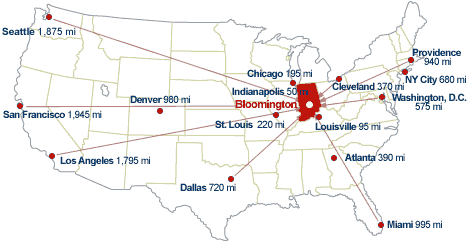
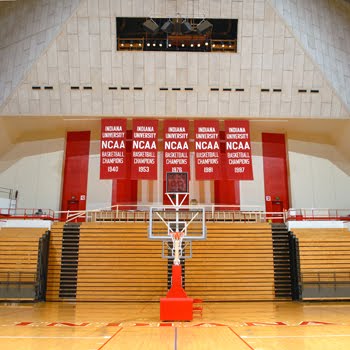


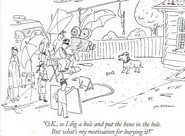

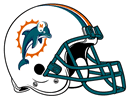



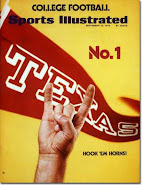
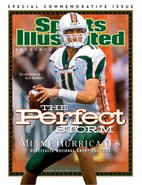
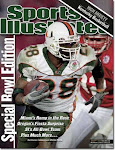
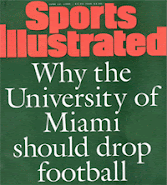
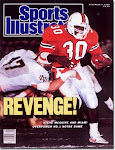
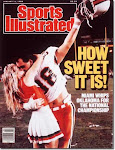
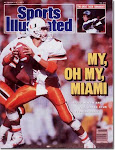

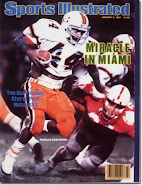
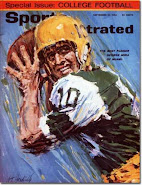
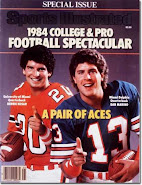

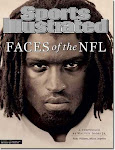
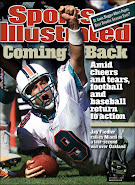
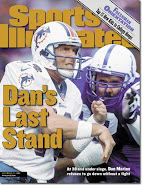
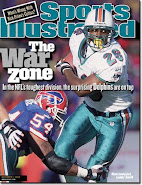
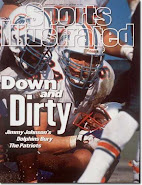

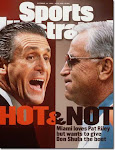
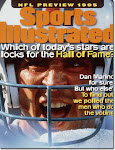
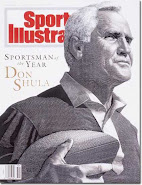
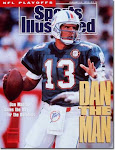
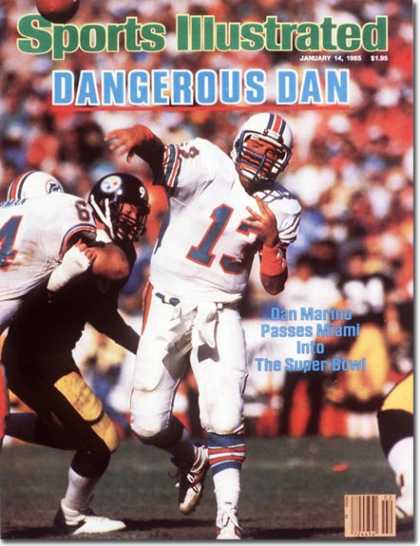

+Sep+10,+1984.jpg)
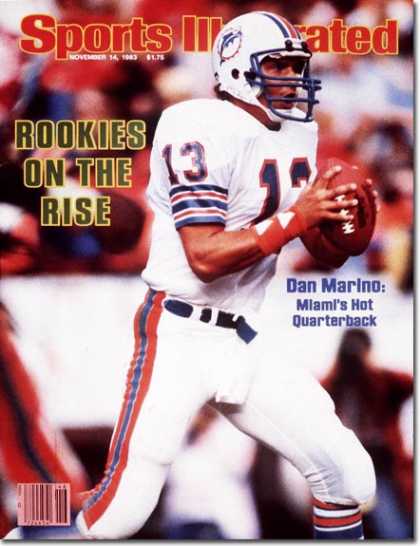
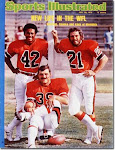
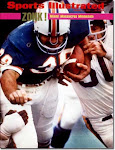

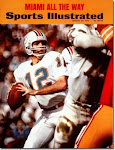
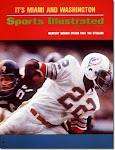

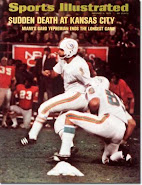


No comments:
Post a Comment